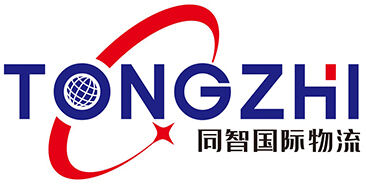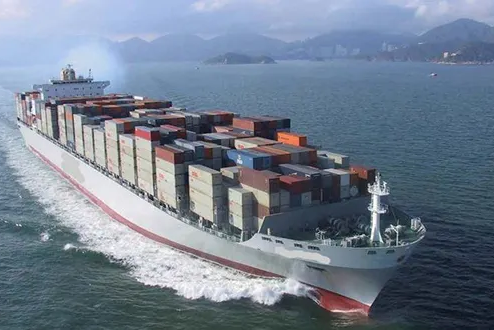Kontejnerová doprava je páteří mezinárodního obchodu, umožňuje efektivní a bezpečný pohyb zboží po celém světě. S neustále rostoucím požadavkem na mezinárodní obchod musí podniky chápat detaily kontejnerové dopravy, aby optimalizovaly své logistické operace. Tento článek prozkoumává nejlepší praktiky a klíčové aspekty pro maximalizaci efektivity při kontejnerové dopravě.
Porozumění kontejnerové dopravě
Přeprava kontejnery zahrnuje dopravu zboží ve velkých, standardizovaných kontejnerech. Tyto kontejnery jsou různých velikostí, nejčastějšími jsou kontejnery o délce 20 a 40 stop. Standardizace umožňuje hladký přenos mezi loděmi, nákladními auty a vlaky, čímž se stává univerzálním a efektivním způsobem dopravy.
Hlavní výhody přepravy kontejnery
Efektivita: Kontejnery jsou navrženy pro snadné zacházení a skládání, což zrychluje proces naložení a vyložení v přístavech. Tato efektivita se překládá do kratších tras a snížených nákladů.
Bezpečnost: Zboží přepravované v kontejnerech je méně náchylné k poškození a krádeži. Robustní konstrukce kontejnerů poskytuje vynikající ochranu proti prvkům a potenciálnímu krádežnickému útoku.
Ekonomickost: Přeprava kontejnery je obecně ekonomičtější než jiné způsoby dopravy, zejména pro mezinárodní přepravy na dlouhé vzdálenosti. Možnost spojit více nákladů do jednoho kontejneru dále snižuje náklady.
Univerzálnost: Kontejnery mohou přepravovat široké spektrum zboží, od surovin a strojů po kořistné zboží a hotové produkty. Specializované kontejnery, jako jsou chladičové jednotky (reefers), vyhovují konkrétním potřebám, jako je řízení teploty.
Nejlepší postupy pro kontejnerovou dopravu
Vyberte správný typ kontejneru
Výběr vhodného typu kontejneru je klíčový pro bezpečnou a efektivní dopravu zboží. Standardní suché kontejnery jsou vhodné pro většinu druhů nákladu, ale podniky by měly uvážit specializované kontejnery pro konkrétní potřeby:
Chladičové kontejnery (Reefers): Pro kořistné zboží vyžadující řízení teploty.
Otevřené kontejnery: Pro nadměrný náklad, který se nedá vejít do standardního kontejneru.
Plošné kontejnery: Pro těžké a hmotné položky, jako jsou stroje a vozidla.
Optimalizujte využití kontejneru
Maximální využití dostupného prostoru v rámci kontejneru může významně snížit náklady na dopravu. Podniky by měly:
Správně balte a zásobujte zboží: Ujistěte se, že je zboží pevně a bezpečně zabalené, aby se během dopravy neposouvalo.
Používejte palety a nosníky: Zjednodušte snadné manipulování a efektivní využití prostoru.
Rovnoměrné rozdělení hmotnosti: Rovnoměrně rozdělte váhu, aby se udržela stabilita a zabránilo se poškození.
Implementujte pokročilé systémy sledování
Sledování a monitorování přepravy v reálném čase poskytuje cenné informace a zvyšuje průhlednost celého procesu dopravy. Pokročilé systémy sledování nabízejí:
Aktualizace polohy v reálném čase: Držte podniky informované o poloze a stavu jejich přeprav.
Monitorování stavu: Ujistěte se, že teplotně citlivé zboží zůstane v požadovaném rozsahu.
Prediktivní analýza: Anticipujte potenciální zpoždění a optimalizujte trasy pro rychlejší doručení.
Zajistěte dodržování předpisů
Dodržování mezinárodních předpisů týkajících se dopravy je nezbytné k tomu, aby se vyhnuly zpožděním a pokutám. Podniky by měly:
Buďte informováni o obchodních předpisech: Držte se aktuálních informací o zákonech týkajících se dovozu/exportu a požadavcích celní správy pro každou destinaci.
Připravte přesné dokumenty: Ujistěte se, že všechny potřebné dokumenty, jako jsou dopravní listiny, certifikáty původu a celní prohlášení, jsou správně vyplněny a podány včas.
Spolupracujte s experimentovanými celními makléři: Zabezpečte hladké projití celním řízením a minimalizujte riziko problémů s dodržováním předpisů.
Využijte technologii pro zvýšení efektivity
Technologie hraje klíčovou roli při optimalizaci operací kontejnerové dopravy. Podniky by měly přijmout:
Software pro správu dopravy: Zjednodušte procesy rezervace, dokumentace a sledování.
Automatizované systémy pro obsluhu nákladu: Zrychlete načítání a vykládku v přístavech.
Blockchain technologie: Zvyšte průhlednost a bezpečnost v dodavatelském řetězci poskytováním nezměnitelného záznamu o transakcích a pohybech.
Klíčové aspekty kontejnerové dopravy
Správa nákladů
Náklady na dopravu mohou významně ovlivnit ziskovost podniku. Klíčové strategie pro správu nákladů zahrnují:
Konsolidace přepravy: Spojujte více přeprav do jednoho kontejneru, abyste využili efekty škálování.
Vyjednávání smluv: Získejte výhodné sazby a podmínky od dopravních společností a expedientů.
Optimalizace tras: Vyberte nejefektivnější a nejlevnější trasy, aby se minimalizoval čas v cestě a snížil spotřeba paliva.
Řízení rizik
Správa rizik spojených s kontejnerovou lodní dopravou je nezbytná pro bezpečnou a včasní dodávku zboží. Uvažte následující:
Pojištění: Chránit proti potenciálním
ztrátám způsobeným poškozením, krádeží nebo prodlením.
Plánování nouzových situací: Vytvořte plány na řešení neočekávaných poruch, jako jsou stávky v přístavech nebo přírodní katastrofy.
Pravidelné auditování: Proveďte audit procesů a partnerů v oblasti dopravy k identifikaci a zmírnění rizik.
Praktiky udržitelnosti
Udržitelnost nabývá stále větší důležitosti v globálním logistickém systému. Podniky mohou přijmout ekologicky přátelské postupy, jako jsou:
Používání palivově úsporných plavidel: Vyberte dopravní společnosti, které používají moderní, palivově úsporná plavidla k omezení emisí uhlíku.
Implementace zelených balníkových řešení: Používejte recyklovatelné a biodegradabilní balnicové materiály k minimalizaci environmentálního dopadu.
Kompensace emisí uhlíku: Účastněte se programů na kompenzaci emisí uhlíku pro neutralizaci ekologické stopy dopravních činností.
Závěr
Kontejnerová doprava je nezbytnou součástí mezinárodního obchodu, nabízí efektivitu, bezpečnost a nákladovou výhodu. Implementací nejlepších postupů, jako je volba správného typu kontejneru, optimalizace využití kontejneru, využití pokročilých sledovacích systémů, zajištění dodržování předpisů a přijetím technologie, mohou podniky maximalizovat výhody kontejnerové dopravy. Navíc je správa nákladů, zmírnění rizik a přijetí udržitelných praktik klíčové pro udržení konkurenceschopnosti na globálním trhu.







































